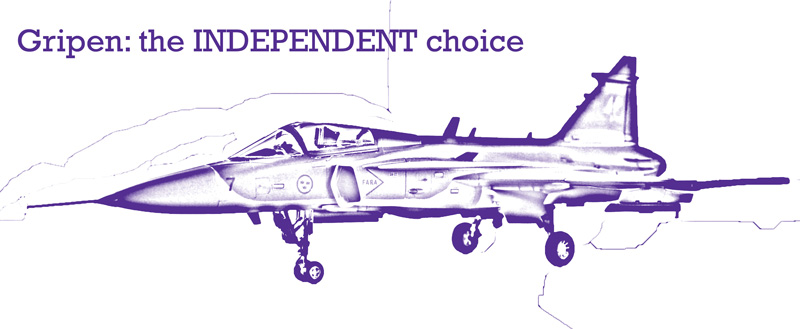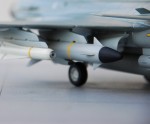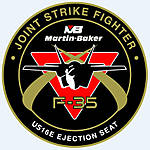Saab Gripen - The Independent Choice
15
Comments
Introduction
A certain Von Clausewitz, a Prussian soldier, historian and author of books on military strategy, is famous for his quote that "war is a continuation of politics by other means".One could also say that the political will to devote a large part of the peacetime economic profits of its country to the preparation of war (and/or defence) will largely determine the outcome of that war. Indeed, while it would be an overstatement to say that economy is the only reason for war it is definitely true that economy, national defence and warfare are closely entangled.
The '91 Iraq war demonstrated that in our highly technological world the sheer numbers of soldiers (no matter how brave) do not count that much anymore; it’s the equipment that they have at their disposal that makes the real difference.
You could say that this is nothing new. Throughout history, better organisation and/or weaponry has often determined the outcome of war. However, in the last century or so this has escalated to the current intense, and highly expensive, arms race which requires vast funding from the peacetime economy.
This is very obvious in the field of modern fighter planes.
The development of a new fighter is a highly complex project involving many companies, and requiring forefront research employing hundreds of scientists and engineers. No one company, or consortium, can take such huge financial risks without the strong support, and a guaranteed market, of its local government.
It's therefore no surprise that the most advanced fighter planes are designed in countries with a very strong economy and the political determination to defend their interests by all means, including military action. Smaller and/or poorer countries are largely dependent on these superpowers for their air force equipment.
Sweden, an exception to the rule.
Sweden is a rather wealthy Scandinavian country with one of the best social welfare systems in the world. It values neutrality very highly and has very strict regulations on the production and export of weaponry. Definitely not the type of country you would expect to invest billions in a fourth generation fighter plane.However, with the Gripen, that is exactly what it has done. A consortium led by Saab, the car and airplane manufacturer, has produced the first fourth generation fighter jet. A feat which seems to be the direct result of down to earth research & development practices which are all too often absent in over-ambitious military product development.
Saab has listened very well to the Swedish Air Force which wanted an agile fighter to defend the homeland, able to operate from improvised landing strips and, above all, affordable by the Swedish taxpayer.
Cost and performance
Cost control is probably the reason why the Gripen, against modern trends, only has one engine (a jet engine comes at +/- 5 million dollar a piece). The challenge was to build a single engine fighter with similar performance as it's much more powerful, double engined, competitors. The manufacturer claims that maintenance costs are 50% smaller than its competitors. Considering that for some modern fighters, each hour in the air is costing 30 (or more) hours of maintenance this is an important sales factor.The design is, with its canards, similar to the one of the Rafale and Typhoon Eurofighter but the Gripen is much smaller and lighter. So small that the internal fuel capacity seems limited and it is very hard to spot a Gripen without centreline external fuel tank.
It would however be wrong thinking that the Gripen performance would be bad.
It is a very agile aircraft with very sophisticated electronic suites integrated. Saab is promoting the Gripen as part of an "integrated net-centric" package which seems to be quite appealing to some countries. There are claims that the networking standard used in this package is outperforming the equipment built on basis of the NATO link-16 standard.
Export strategy
But a few hundred planes for the Swedish Air Force are insufficient to justify, and pay for, such an undertaking. Hence, like any other manufacturer, Saab is trying to sell its fighter across the globe… and this with remarkable success.The Gripen consortium is promoting its fighter by emphasising not only its technical and military merits, but mostly by referring to its economic benefits and the unique political stance of the Swedish government. It can't be described better than by quoting a recent advertisement published in prominent air force related magazines:
As a military non-aligned nation, Sweden understands better than anyone the necessity of an independent and autonomous air force. The Gripen fighter, created by Saab, is the defining example of Sweden's long history of military independence.
In an uncertain world you need partners that understand your situation and definitively deliver what you, and your nation, needs. Gripen's unique, independent origins give us the insight that others fail to gain, the absolute requirement for partnership based on common ground, mutual understanding and long-term commitment.
Full customer insight into all levels of aircraft technology as well as unrivalled technological and knowledge transfer, allow Gripen's customer nations to enjoy full control and autonomy over their air force and their future as a nation.
The independent choice for an independent future.
One of the big advantages of the Gripen is that it already exists with full operational status, that potential clients (who meet the conditions for armament deals set by the Swedish government) can actually see it flying, and get a very realistic view of costs and performance.
Saab also demonstrates that it is able to upgrade existing planes (Swedish Gripen A have been upgraded to C standard) and integrate weapon systems demanded by customers.
Moreover, the Gripen consortium has a very active policy of turning clients [e.g. India, Brazil] into partners with extensive programs of industrial cooperation and technology transfer. It looks as if Gripen is gradually building a group of partner countries which could, in the long run, share the cost of developing a next (5th?) generation fighter plane.
The Gripen's future?
The long term development roadmap should lead to the Gripen NG. Saab is actively promoting this concept to potential clients of the F-35 Joint Strike Fighter (JSF).The JSF seems like a complete contrast to the Gripen. It's designed to be a fifth generation fighter available in a common, a STOVL and a Carrier based version. It is primarily US designed but the costs are shared with a number of nations who hope to gain technological knowledge, economic benefits once the plane is mass produced, and a state of the art replacement for their aging fighter fleet.
Those nations have been confronted with escalating costs, increasing delays and a US "partner" unwilling to share with them the technology developed under the Joint Strike Fighter program.
All this could be wiped off the table in the case of a clear military need justifying the F-35 and its multi-billion dollar research program. Against a background of a world wide financial crisis, several analysts are questioning the need for fifth generation super technology while the current F-15 led generation has never been beaten in combat.
Countries like Norway and The Netherlands, have recently confirmed their commitment to the JSF, but seem to continue paying attention to the Gripen NG demonstrator plane.
It is actually very difficult to find out what the real fly-away cost is of a modern fighter plane. Nobody involved in the complex deals (which usually include aspects like training, technology transfer, and economical compensations) has an interest in being transparent about this.
It seems that a realistic price tag for a Gripen C is around 70 million dollar (tax included). I emphasise "it seems" because I could, despite my efforts, not find a clear cut answer as to what the cost of such thing really is. There is a cloud of mystery around military deals which makes it very difficult to find hard facts.
If the Gripen NG would come to the market for twice this amount then it would still be a bargain compared to the excessive prices currently quoted for the F-35 (+260 million dollars a piece for the first batches).
If the Gripen (or one of its competitors: Typhoon or Rafale) would succeed eroding the customer base of the F-35 then this could have a devastating effect on the whole JSF programme as this would make the price per plane further escalate.
Or, how even independence is relative…
In any case, if homeland defence is your objective, and you can't wait until the day that JSF promises turn into operational reality, or if its forefront R&D is simply to expensive (or unnecessary), then the Gripen might just be the plane that you are looking for.
Comments
That was a great read drabslap and also really good pictures.
Grippen has always been one of my favourite aircraft but just on looks i think the jsf has it beaten.
neil.......
MAY 11, 2009 - 08:36 AM
for me the most beautiful plane ever is the F-16 with the more recent Rafale in a good second place
MAY 11, 2009 - 10:54 PM
I guess my heart just aren't set on jets, just because there are no pistons, save the hydraulic system but the F 16 can raise my eyebrows a bit, mostly because the airduct, but also because of the canopy. Not a frame in sight. That's soooo cool.
Tony
MAY 12, 2009 - 04:48 AM
Yes, it is clear that on this site World War II is king.
Somewher I wonder why?
Is it because the disctinction between the "good" and the "bad" is so easy to make?
MAY 19, 2009 - 02:10 AM
No, I guess it's a bit more simple than that. At least in my case. When I was a kid anything with wings was cool, so I built more or less anything from Bristol Bulldog to McDonnell Phantom.
In my teens modelling got put to sleep by motorcycles, and even if I only had a Yam 125 at first I wanted a Laverda, because of the sound. I guess this has made a mark on my interest in planes too. If it's beautiful I like it, but if it sound good I love it.
As an engine designer I'm also humbled by the engineering of these old monsters, both inlines and radials. Everything that popped up as "brand new ideas" on bikes and cars in the 70's and 80's - fourvalve heads, turbo, injection, light alloy housings - was incorporated in the aero engines of the 30's and 40's.
In september I'm going to Germany to tick of Bf 109 and Fw 190 in my "birdwatchers" book, but mostly I will listen...
Tony
MAY 19, 2009 - 08:57 PM
I am driving an Aprilia caponord.
It must be greater than great to design motorcycles. Yee, what a career. whatr exactly are you working on?
I know, horribly off topic but still very interesting
MAY 20, 2009 - 04:16 AM
Related to my little Gripen article.
President Obama has just announced measures to stop out of control developments in military procurement and the use of not proven technology.
MAY 26, 2009 - 03:11 AM
Well, let's not get too far off topic. First is an "assembly instruction".
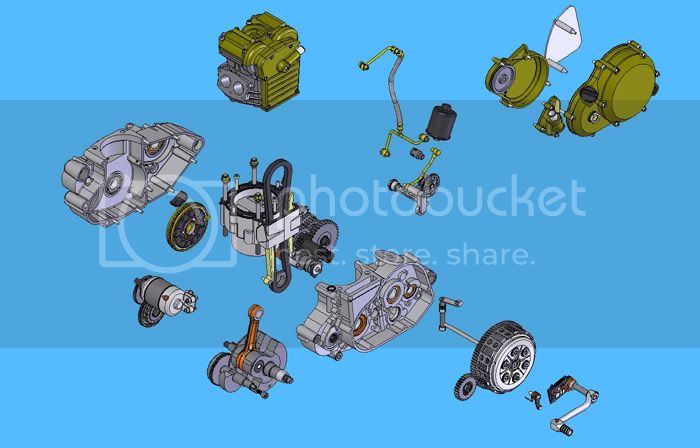 When that is done, you just hang it into the rest, resulting in this.
When that is done, you just hang it into the rest, resulting in this.
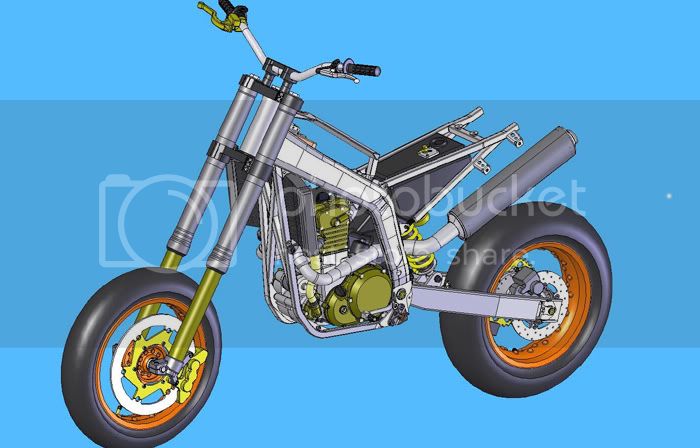 Finally, with a well executed paintjob and a slight and subtle weathering, you may end up with this little baby, not too far from production.
Finally, with a well executed paintjob and a slight and subtle weathering, you may end up with this little baby, not too far from production.
 You'll find some more info on the specification page
The sun might not shine every day even in a motorcycle factory, but when it shines - boy the way it shines!
Tony
You'll find some more info on the specification page
The sun might not shine every day even in a motorcycle factory, but when it shines - boy the way it shines!
Tony
 When that is done, you just hang it into the rest, resulting in this.
When that is done, you just hang it into the rest, resulting in this.
 Finally, with a well executed paintjob and a slight and subtle weathering, you may end up with this little baby, not too far from production.
Finally, with a well executed paintjob and a slight and subtle weathering, you may end up with this little baby, not too far from production.
 You'll find some more info on the specification page
The sun might not shine every day even in a motorcycle factory, but when it shines - boy the way it shines!
Tony
You'll find some more info on the specification page
The sun might not shine every day even in a motorcycle factory, but when it shines - boy the way it shines!
TonyMAY 26, 2009 - 04:06 AM
That is really stunning and absolutely BEAUTIFUL.
It must be wonderfull to create scale 1/1 models which actually function and to do that for a living
I am impressed (and a bit jealous as well )
MAY 26, 2009 - 07:51 AM
Related to my article on the Gripen:
Boeing claims that the US will "dumb down" the JSF-35 for international sales.
It is quite clear that Boeing has a lot of interest in casting doubt on the F-35 to promote its own new F-15 silent eagle.
However, it is also consistent with Lockheed Martin (the JSF main contractor) having two separate contracts, worth a total of $737 million, for
quote
to “design, develop, verify and test a version of the JSF air system that is as common as possible to the U.S. air system within the National Disclosure Policy.” This version is designated “International Partner Version.”
end quote
In plain language; the UK, The Netherlands, Norway... are alowed to pay massive sums for the development of the JSF, but ain't allowed to have it at the end.
Boy, this is really good news for Gripen ;-))))
JUN 19, 2009 - 03:38 AM
Copyright ©2021 by AeroScale. Images also by copyright holder unless otherwise noted. The views and opinions expressed herein are solely the views and opinions of the authors and/or contributors to this Web site and do not necessarily represent the views and/or opinions of AeroScale, KitMaker Network, or Silver Star Enterrpises. Images also by copyright holder unless otherwise noted. Opinions expressed are those of the author(s) and not necessarily those of AeroScale. All rights reserved. Originally published on: 2009-05-09 00:00:00. Unique Reads: 11643




